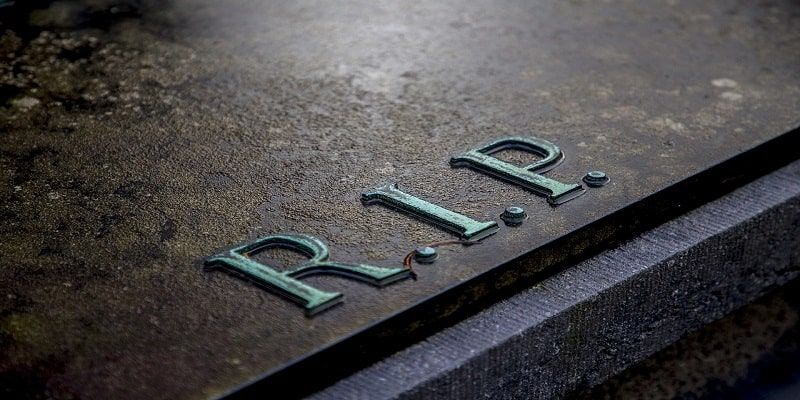Creating a Personalized Funeral Service Program
Discover how to design a meaningful and personalized funeral service program that reflects a loved one's life with care and dignity.

Designing a personalized funeral service program is a meaningful step toward honoring a loved one's unique journey, values, and legacy. In today’s evolving landscape, families increasingly seek services that go beyond tradition, opting instead for ceremonies that reflect the individuality of the person being remembered. Whether held in a religious setting, community hall, or at a funeral home in Kennett Square, PA, a well-crafted funeral program offers both structure and emotional resonance, creating space for remembrance, healing, and connection.
Understanding the Purpose of a Funeral Service Program
A funeral service program is more than just a printed handout. It acts as a guide for attendees, offering insight into the order of events while providing a thoughtful narrative of the deceased’s life. Beyond listing speakers or musical selections, a well-structured program can include personal elements like photos, favorite quotes, meaningful dates, and heartfelt messages from loved ones.
Starting with Personal Details and Biography
The foundation of any personalized program is the inclusion of personal details that celebrate the individual’s life. This typically begins with:
- Full name and nickname
- Date of birth and date of passing
- Family relationships (spouse, children, siblings)
- A brief biography highlighting education, career, hobbies, and community involvement
A few meaningful paragraphs can paint a rich picture of who the person was, anchoring the program in authenticity and warmth.
Incorporating Family and Community Voices
Inviting family members or close friends to contribute stories or reflections creates a deeper emotional connection. These tributes can be printed in the program or delivered live during the service. For families with diverse spiritual or cultural backgrounds, including prayers, poems, or proverbs in different languages also enhances the personalization of the ceremony.
Thoughtful Design and Aesthetic Choices
The design of the program should reflect the tone of the service and the personality of the departed. Consider:
- Color palette: Favorite colors or serene tones
- Typography: Readable and elegant fonts
- Images: A front-cover photo, life snapshots, or a collage
- Symbolism: Religious icons, floral borders, or custom motifs
Printing quality also matters. Opting for thicker paper and high-resolution images elevates the tactile and visual experience, conveying care and dignity.
Order of Service and Ceremonial Elements
A clear layout of the service's structure ensures guests can follow along and participate. This typically includes:
- Welcome or opening remarks
- Musical selections
- Scripture readings or inspirational texts
- Eulogy or personal tributes
- Moments of silence or candle lighting
- Closing remarks and acknowledgments
- Reception details (if applicable)
In religious services, this section might also include liturgical readings or sacraments. For secular services, families often include meaningful rituals, such as memory sharing or symbolic acts of farewell.
Honoring Hobbies, Values, and Passions
One powerful way to personalize a funeral service program is by reflecting the individual's passions. For example:
- A gardener might be commemorated with botanical illustrations
- A music lover’s program may include lyrics or concert photos
- A teacher’s service could feature a favorite quote or student testimonials
This attention to the individual not only enriches the experience but also comforts attendees by celebrating what made the person special.
Including a Legacy Section or Keepsake
Many families include a section that highlights how the loved one made a lasting impact, whether through charitable work, mentorship, or creative achievements. This can also be a space for listing memorial donations or foundations established in their name.
Some programs are designed as keepsakes, complete with:
- Bookmark inserts
- Memory cards for guest reflections
- Digital QR codes linking to photo albums or tribute videos
Printing and Distribution Tips
Once the design is complete, ensure that enough copies are printed for guests, with extras for those who may be unable to attend. It is often helpful to have someone dedicated to handing out the programs or placing them on seats prior to the service.
For hybrid or virtual services, a digital version of the program can be emailed or hosted online for remote attendees.
Collaborating with Professionals
Families often find comfort in working with funeral directors or planning consultants who can assist with layout, editing, and printing. These professionals understand the importance of nuance and timing and can offer templates or past examples for inspiration.
Additionally, many funeral homes are now incorporating modern technology, allowing for multimedia displays, digital tributes, and online guestbooks—all of which can be referenced in or linked from the service program.
Final Reflections
Creating a personalized funeral service program is a compassionate way to honor a life well-lived. By thoughtfully curating content that reflects the loved one’s identity and values, the program becomes a cherished element of remembrance, comfort, and connection for all who attend. Whether preparing ahead or during a time of grief, families seeking guidance can find expert support at a trusted funeral home in Kennett Square, PA.
To learn more about how to design a meaningful funeral program and receive professional support, consider reaching out to Grieco Funeral Home & Crematory, Inc., where personalized care and dignity are the foundation of every service. Call us to get started.











